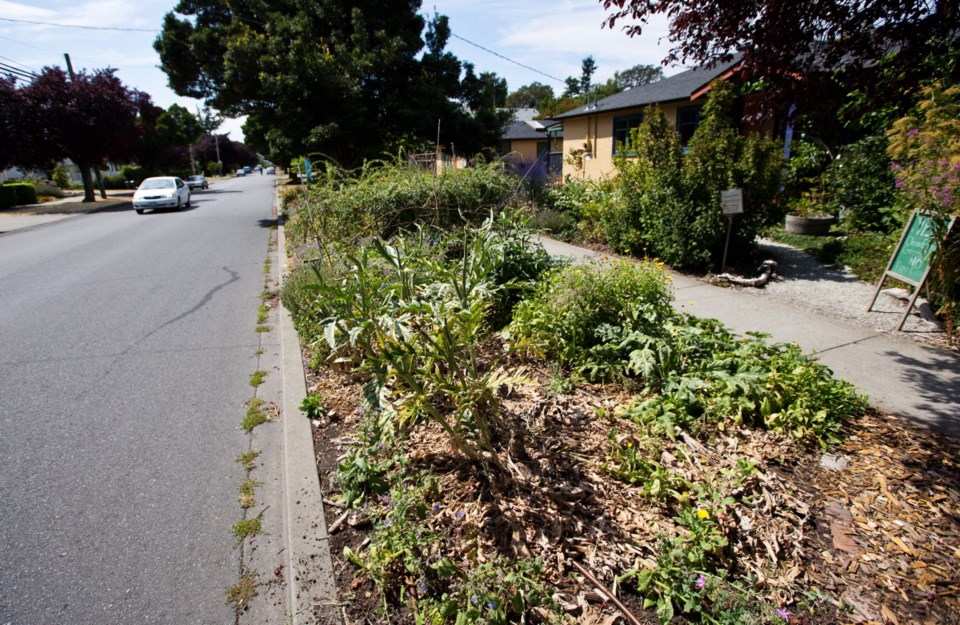Victoria council is hoping that by encouraging gardens on boulevards and vacant lots, a sense of community will sprout along with local produce.
An urban farm in Coun. Pam Madoff’s James Bay neighbourhood has been transformative, she said, prompting boulevard gardens, backyard greenhouses and beehives — as well as fostering a real sense of neighbourliness.
“What it’s done for the community has been absolutely phenomenal,” Madoff said. “I really hope there will be that aspect of neighbourliness where people are actually willing to let gardeners come in and you get to share in the produce, which is great, but you also get to make incredible personal connections.”
She noted that the last time community gardening was at the forefront was during the Victory Gardens of the Second World War. “It was out of a need that those gardens were created, but what it did for community as well was really quite extraordinary.”
Councillors last week approved a process called Growing in the City to put the final touches on its new boulevard gardening guidelines. The hope is to update the community garden policy, create an inventory of city-owned land for food production and look into small-scale commercial urban agriculture.
Coun. Geoff Young said the city initiative reflects demand from the public.
“I think it is absolutely essential to maintain the spirit that the public is driving this rather than the city trying to persuade people to grow food,” he said.
“It can’t work if people feel they are being pushed into it or persuaded. It’s something people have to want to do.”
City staff plan to host focus groups and seek public comment through the summer to share knowledge and get feedback in the development of guidelines.
Key topics include land availability for urban gardening and food production, mechanisms to encourage food production on vacant private land, and maintenance, ownership and turnover.
Coun. Ben Isitt said it will be important to engage city parks crews and First Nations in the process.
He also said staff shouldn’t rule out road rights of way when examining potential growing areas, including some in areas of Beacon Hill Park.
Given the sensitivity around restrictions on how the park can be used, Isitt said, he doesn’t think cultivating land in Beacon Hill should be considered. “But I think everyone would agree that if land was appropriate for a roadway, how could it not be appropriate for food production.”
Mayor Lisa Helps suggested a workshop be held for users of the Our Place street drop-in centre.
“They have been talking for a long time about a garden outside of Our Place, so I would say a specific workshop needs to be held at Our Place to figure out how we can create food security for that group of folks,” she said.
Helps also suggested it might be worth partnering with the tech sector to develop an app to show a real-time inventory of food, such as fruit, growing on public land.
“We’d probably be the first city in North America to have a Growing in the City app, and it’s always good to be first at things.”
Where does your garden grow?
Do you garden on your boulevard or a vacant lot or know of any such gardens? Send us a photo, tell us where the garden is and what’s in it, and we’ll share it with our readers. Email your photos and information to localnews@timescolonist.com. Put “gardens” in the subject line.



